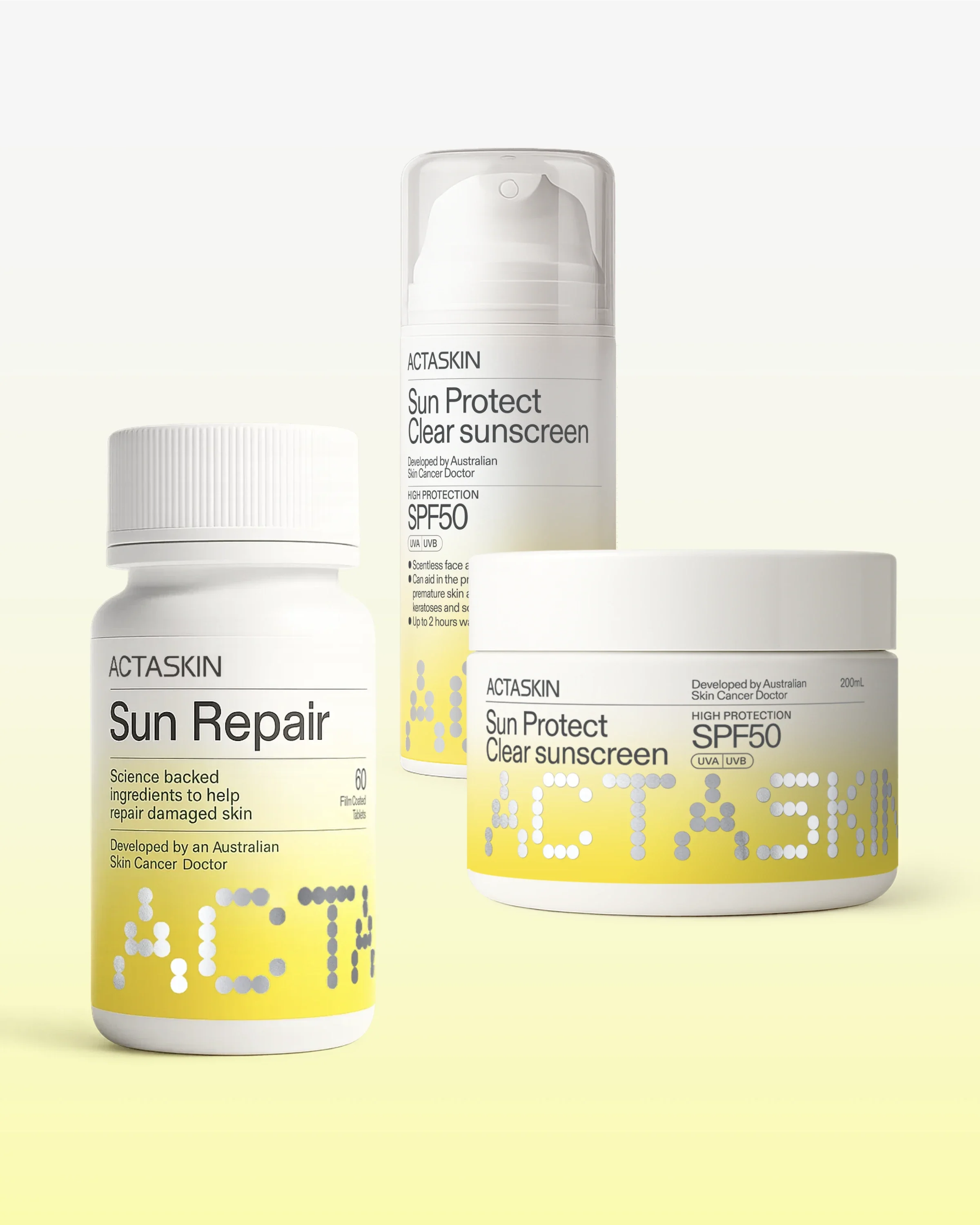Let’s clear something up:
Any change in the colour of your skin caused by UV light is a sign of skin damage.
Any tan is an injury to the skin, putting you at risk not only for skin cancer, but also for early wrinkles and thinned skin. And here's the thing: this damage builds up over time.
The Science Behind Tanning
When your skin is exposed to UV radiation, your body ramps up melanin production to try to protect itself. Melanin absorbs and scatters UV rays, which is why our skin darkens as a natural defence mechanism. However, the level of protection melanin provides is incredibly limited. In a fair or ‘olive’ complexion, it is roughly equivalent to an SPF 3, which is far from enough to protect against the harmful effects of UV radiation. Relying on a tan as a form of sun protection is both ineffective and dangerous.
Even with a tan, UV rays still penetrate the skin, leading to DNA damage, premature ageing, and a significantly increased risk of developing skin cancer. What's worse is that people often develop a false sense of security when they tan, which can lead to spending more time in the sun without proper protection. This is a dangerous cycle that increases your overall risk of skin damage and cancer.
The Myth Perpetuated by Selective Evidence
This myth about base tans being "safe" or "protective" is often perpetuated by influencers or individuals who cherry-pick research to back up their claims, ignoring the broader evidence. The argument sometimes comes from studies that show outdoor workers don’t have significantly higher rates of melanoma compared to others. While it’s true that childhood sunburn is a stronger risk factor for melanoma, this selective reading of data is misleading.
What those who promote the “base tan” myth conveniently overlook is that the same outdoor workers have three times the rate of other skin cancers, such as squamous cell carcinoma (SCC), and are 40 times more likely to develop invasive SCC. This is not a small risk—it’s substantial, and it's a direct consequence of accumulated sun exposure and tanning.
So, let’s make one thing clear: don’t intentionally damage your skin. Protect it, and give it the care it deserves. By avoiding the sun's harmful rays and using proper sun protection, you’ll significantly reduce your risk of skin cancer and ensure your skin stays healthier, longer.
Backed by Research
Numerous studies confirm the long-term dangers of tanning. Research shows that repeated UV exposure, even without burning, can cause cumulative DNA damage, leading to skin cancers like melanoma, SCC, and basal cell carcinoma. Additionally, Cancer Council Australia states that over time, UV damage accumulates, even without sunburn, leading to an increased risk of skin cancer.
Further Reading:
- Nohynek, G. J., et al. (2006). Toxicology of Sunscreens. Dermatologic Clinics, 24(3), 1-13.
- International Agency for Research on Cancer (IARC). (1997). Occupational risk of skin cancer in outdoor workers. IARC Scientific Publications, 142, 1-208.
- Armstrong, B. K., & Kricker, A. (2003). Skin cancer risk in outdoor workers: A review. Occupational Medicine, 53(5), 285-296. https://doi.org/10.1093/occmed/kqg095
- Schneider, J. L., Lee, K. K., & Hodge, S. (2013). Risk of skin cancer among outdoor workers in the United States. American Journal of Industrial Medicine, 56(8), 957-965. https://doi.org/10.1002/ajim.22223
- Cancer Council Victoria. (n.d.). 7 myths about sun protection. Retrieved April 7, 2025, from https://www.cancervic.org.au/sunsmart



